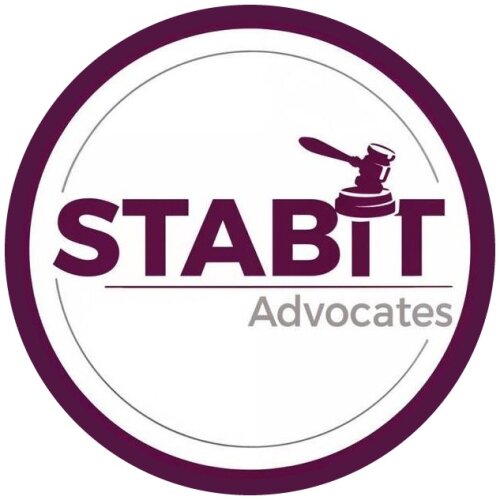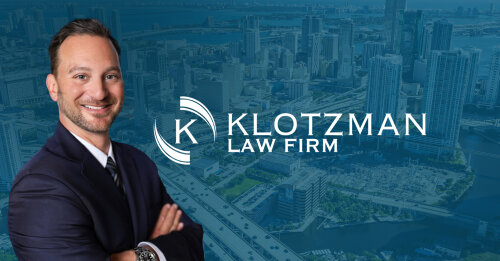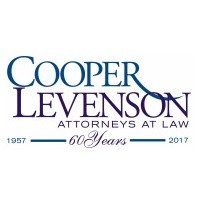Best Motorcycle Accident Lawyers in New York City
Share your needs with us, get contacted by law firms.
Free. Takes 2 min.
List of the best lawyers in New York City, United States
1. About Motorcycle Accident Law in New York, United States
In New York, motorcycle accident law combines traffic rules, insurance protections and civil liability principles. The core framework comes from the New York Vehicle and Traffic Law (VTL), the Insurance Law for no-fault and liability coverage, and the Civil Practice Law and Rules for pursuing claims in court. Understanding how these areas interact helps riders seek fair compensation.
New York follows a pure comparative negligence system, which means fault can be shared among multiple parties and each party’s recovery is reduced by their own percentage of fault. This makes thorough evidence collection and precise fault assessment essential after an accident. A skilled legal counsel can help identify all liable parties and maximize potential recovery.
According to the National Highway Traffic Safety Administration, motorcycles face a significantly higher fatality risk per mile traveled than passenger cars, underscoring the need for careful accident investigation and robust legal representation.
NHTSA
For residents and visitors in New York, the path to compensation often involves a mix of insurance claims, negotiations with insurers and, if necessary, a civil action in court. A lawyer with expertise in motorcycle accidents can navigate contributory fault questions, medical liens and settlement dynamics specific to New York law.
2. Why You May Need a Lawyer
- You were seriously injured and the other driver disputes fault or downplays injuries, risking underpayment. A lawyer can preserve evidence and push for full compensation.
- The at fault driver lacks sufficient insurance or is uninsured, making full recovery uncertain without pursuing additional sources such as uninsured/underinsured motorist coverage.
- The insurer offers a quick settlement that does not cover medical bills, lost wages or long term care needs. An attorney can negotiate toward a fair settlement or file suit if needed.
- The crash involved a commercial vehicle, a government entity, or complex liability questions such as multiple vehicles and lane changes. Legal counsel can map liability and oversee discovery.
- You have pre existing conditions or complex medical issues making it hard to prove damages. A lawyer can link injuries to the crash and maximize damages.
- You are balancing no fault coverage questions with tort claims. An attorney can explain how NY no fault interacts with third party liability in your case.
3. Local Laws Overview
Vehicle and Traffic Law (VTL)
The Vehicle and Traffic Law governs how motorcycles may be operated, licensing requirements, equipment standards and safety duties on New York roads. It sets the baseline for fault and compliance in traffic incidents. Motorcyclists must follow the same road rules as other operators, with specific rules addressing motorcycle posture, lane usage and signaling where applicable. Understanding VTL provisions helps establish who may be at fault in a crash and the liabilities involved.
Insurance Law Article 51 (No-Fault)
No-Fault benefits in New York are designed to provide quick medical and certain wage-replacement payments after a motor vehicle accident. In practice, No-Fault coverage is primarily linked to vehicles covered by no-fault auto policies, and motorcycle riders are typically not eligible for standard PIP benefits after a motorcycle only crash. This makes it essential to identify all potential sources of recovery, including third party liability and, where applicable, underinsured or uninsured motorist coverages.
As a consumer, you should review the New York Department of Financial Services No-Fault information for guidance on how these protections work and what steps to take if a claim is denied. Always verify your policy language and eligibility with your insurer or an attorney.
Civil Practice Law and Rules (CPLR) 1411 - Comparative Negligence
New York uses a pure comparative negligence framework under CPLR 1411. This means a plaintiff can recover damages even if partly at fault, but their award is reduced by the percentage of fault assigned to them. The precise allocation of fault can significantly affect the total recovery in a motorcycle accident case. An attorney can advocate for favorable fault allocation through evidence collection, expert testimony and negotiation.
Recent trends and practical notes: New York has not enacted major overhauls to No-Fault or core motorcycle accident statutes in the last few years; practitioners rely on established rules under VTL, CPLR 1411 and Insurance Law Article 51. This emphasizes the importance of solid factual development and skilled negotiation or litigation when pursuing damages.
4. Frequently Asked Questions
What is the statute of limitations for a New York motorcycle accident claim?
Most personal injury claims must be filed within three years from the date of the crash. Exceptions can apply for municipal or government entities, which require notice within shorter periods.
How is fault decided in a New York motorcycle crash?
Fault is determined using evidence from the scene, eyewitness testimony, vehicle damage, and expert analysis. New York follows CPLR 1411, a pure comparative negligence standard.
Do I need a lawyer to start a claim in New York?
No, you can start on your own, but a lawyer improves evidence gathering, insurance communications and settlement outcomes. Complex cases usually benefit from legal representation.
How much will a New York motorcycle accident attorney charge?
Most personal injury lawyers work on a contingency fee, typically one third to 40 percent of the recovery. Fees are paid only if you win or settle your case.
Can I get no-fault benefits for a motorcycle crash?
No-Fault benefits in New York are generally tied to auto policies. Motorcycle only crashes typically do not qualify for standard PIP benefits, so other avenues for recovery must be pursued.
How long does it take to settle a New York motorcycle case?
Settlements can occur within a few months after evidence is gathered or can take over a year in complex cases. Trials may extend the timeline further, depending on court backlogs.
What documents should I collect after a crash?
Collect police reports, medical records, ambulance and hospital bills, photographs of injuries and vehicle damage, contact information for witnesses, and insurance details of all involved.
Do I sue the driver or the insurance company?
Most cases begin with a claim against the at fault driver and their insurer. If settlement fails or is inadequate, you may file a lawsuit against the liable party in civil court.
What is comparative negligence in New York?
Under CPLR 1411, you can recover damages even if partly at fault, but your recovery is reduced by your percentage of fault. A higher degree of fault can limit or bar recovery.
Is there a difference between filing an insurance claim and filing a lawsuit?
Yes. An insurance claim seeks compensation through the insurer, while a lawsuit is a court action to obtain a judgment for damages. A suit may be necessary if the insurer undervalues or denies your claim.
Can I recover for pain and suffering in New York motorcycle accidents?
Yes, if fault lies with another party and you have proven damages such as physical injuries and emotional distress. The amount depends on fault percentage, injuries and case specifics.
What if the other driver is uninsured or underinsured?
NY law allows you to pursue damages through your own uninsured/underinsured motorist coverage where available, or through a premium-funded source if applicable. A lawyer can evaluate all options.
5. Additional Resources
- New York State Department of Motor Vehicles (DMV) - Motorcycles - Provides licensing, registration, safety information and rider education resources.
- New York Department of Financial Services - No-Fault Insurance - Consumer guidance on No-Fault coverage, claims procedures and eligibility considerations.
- National Highway Traffic Safety Administration - Motorcycle safety - Federal data, safety campaigns, and rider safety best practices.
6. Next Steps
- Ensure safety and seek medical care promptly. If you are injured, follow medical advice and keep all records, receipts and doctor notes. This supports your recovery and your case.
- Document the crash scene. Take photos, collect contact details for witnesses, and obtain the police report. Preserve the scene and all damaged items if possible.
- Preserve evidence and avoid early settlements. Do not sign releases or settlements before obtaining medical and legal advice. Early settlements can undervalue damages.
- Consult a New York motorcycle accident lawyer. Schedule consultations with local attorneys who practice no-fault and tort claims. Aim for meetings within 1-3 weeks of the crash if possible.
- Understand fees and engagement terms. Ask about contingency fees, cost advances, and what happens if you do not win. Obtain a written retainer agreement before proceeding.
- Provide your attorney with complete information. Share medical records, insurance details, wage loss, and any surveillance or eyewitness information. Full disclosure supports stronger claims.
- Set expectations for the timeline and process. Your attorney will outline the steps, from demand letters to potential settlement conferences or trial, with estimated timelines.
Lawzana helps you find the best lawyers and law firms in New York City through a curated and pre-screened list of qualified legal professionals. Our platform offers rankings and detailed profiles of attorneys and law firms, allowing you to compare based on practice areas, including Motorcycle Accident, experience, and client feedback.
Each profile includes a description of the firm's areas of practice, client reviews, team members and partners, year of establishment, spoken languages, office locations, contact information, social media presence, and any published articles or resources. Most firms on our platform speak English and are experienced in both local and international legal matters.
Get a quote from top-rated law firms in New York City, United States — quickly, securely, and without unnecessary hassle.
Disclaimer:
The information provided on this page is for general informational purposes only and does not constitute legal advice. While we strive to ensure the accuracy and relevance of the content, legal information may change over time, and interpretations of the law can vary. You should always consult with a qualified legal professional for advice specific to your situation.
We disclaim all liability for actions taken or not taken based on the content of this page. If you believe any information is incorrect or outdated, please contact us, and we will review and update it where appropriate.















